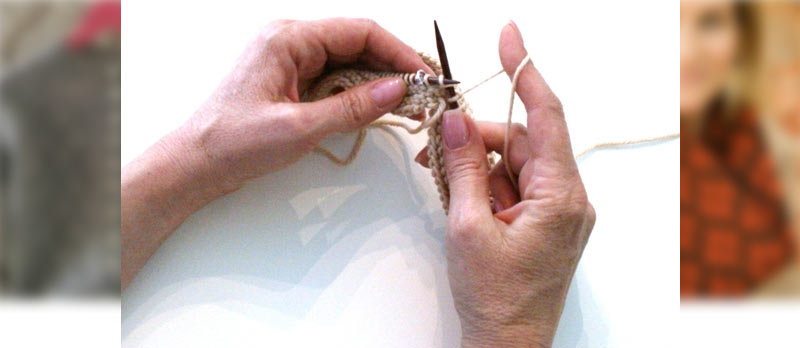Lots of people talk about wanting to be able to knit faster or are impressed by other people who they see as speedy knitters.
But for lots of people who try to knit faster, it becomes as case of more haste less speed, because when they try to knit really quickly they find themselves dropping stitches , splitting yarn or making other mistakes that can add to the overall knitting time.
In fact, if you want to knit faster it is much better to think about developing a smooth, efficient knitting style which results in a steady rhythm and each stitch taking very little movement.
One of the keys is to develop a style where you don’t ever completely let go of your yarn or your needles.
This will mean finding the right style for you and practising to develop your smooth action.
There are two main knitting styles that you will come across that retain a hold of both needles and yarn – flicking and continental style
Flicking
In this style, knitters hold the yarn with their right hand and use their index finger to move or “flick” the yarn round the needle without ever letting go of the right-hand needle. This allows them to work at a steady rhythm with very little excess movement.

You can see how the yarn and needles are held in this picture by Stacie of VeryPink.com who has made a video showing the technique.
Continental knitting
While the “English” style of knitting most commonly learned in the UK uses the yarn in the right hand, in continental knitting you hold and tension the yarn with your left.
The right-hand needle is used to pull or “pick” the yarn through the stitch as in this video from Knitting Help.
Again this creates a very efficient movement, that allows you to knit smoothly.
It is worth trying out both techniques to see what suits you best. You may also find that you need to adjust how you wrap the yarn on your hand, because we all have particular strengths and weaknesses in our fingers.
Needles
If is also useful to think about what sort of needles you are most comfortable using. Some people prefer long needles they can tuck under their arms, while others like working on circular needles (even for rows) because they find it easier only to move the short tips. Again, you need to find what gives you the smoothest action.
The same is true of needle material with some zipping along on metal while other people find wooden needles help them find a steady rhythm.












